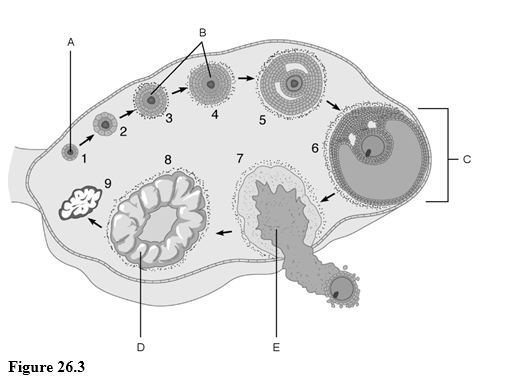Identify the bones of the lower limb
A) humerus, radius, and ulna
B) femur, radius, and ulna
C) femur, tibia, fibula, patella, tarsal bones, metatarsal bones, and phalanges
D) femur, tibia, fibula, patella, carpal bones, metacarpal bones, and phalanges
E) humerus, tibia, fibula, radius, ulna, patella
Answer: C
You might also like to view...
Using Figure 26.3, match the following:

1) The stage called ovulation.
2) Vesicular (Graafian) follicle.
3) Primary follicles.
4) Primordial follicle.
5) Corpus luteum.
6) Mature follicle.
This area of the brain can control eye and head movements.
a. postcentral gyrus b. superior colliculi c. mammillary body d. temporal lobe
Light refracts as it passes through the
A. vitreous humor, sclera, and iris. B. lens, aqueous humor, and sclera. C. cornea, retina, and vitreous humor. D. lens, cornea and humors of the eye. E. sclera, iris, and retina.
Tendons and ligaments have
A. a high degree of vascularization, therefore high perfusion and rapid healing. B. a high degree of vascularization, therefore high perfusion and slow healing. C. a low degree of vascularization, therefore high perfusion and rapid healing. D. a low degree of vascularization, therefore low perfusion and slow healing. E. a high degree of vascularization, therefore low perfusion and slow healing.